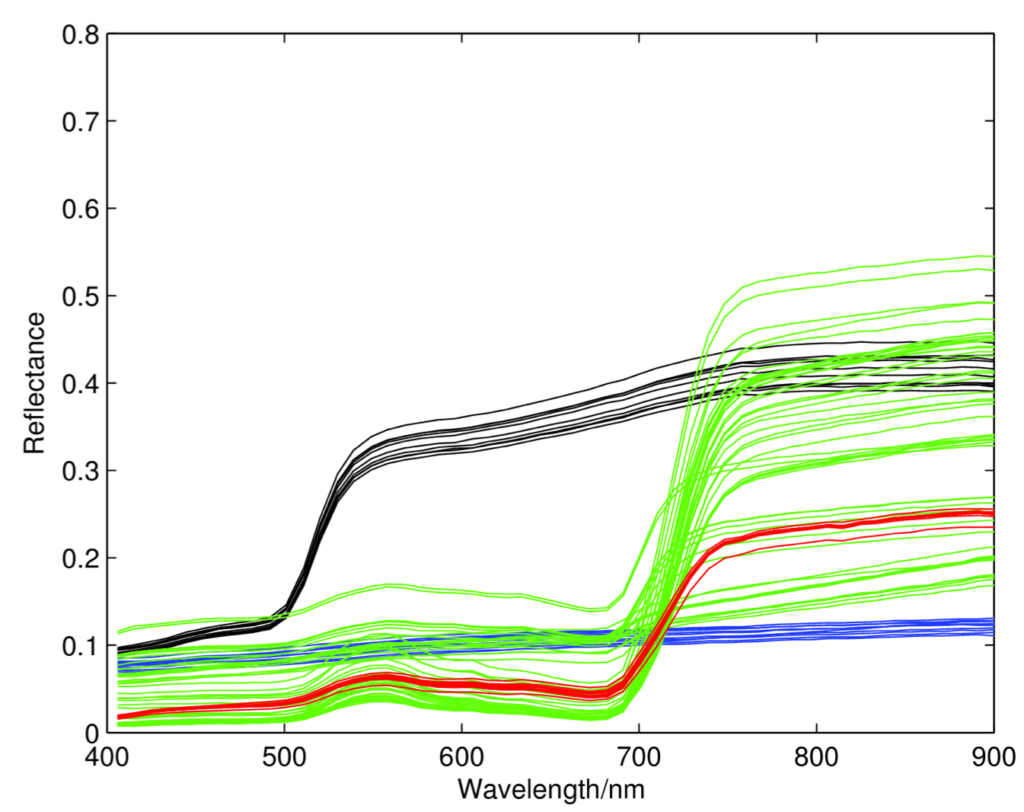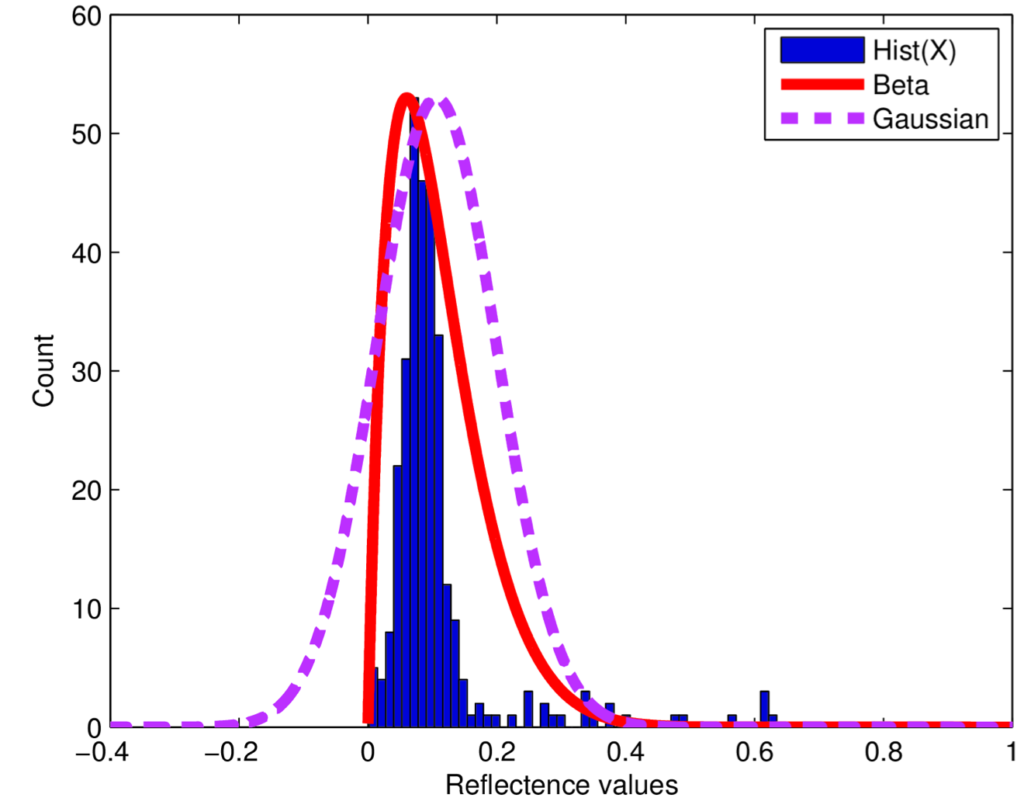
Hyperspectral Unmixing refers to the process of estimating the proportions/abundances of each endmember (pure spectral signature of materials) at every pixel of a hyperspectral image.
Due to sensor noise and varying environmental and temporal conditions, the spectral signature of the same material may vary across the scene. This phenomenon is called endmember variability. To address such endmember variability in hyperspectral unmixing, previous studies either regarded endmembers as a set of individual spectra, or modeled endmembers as a distribution, such as the Normal Compositional Model (NCM). However, NCM models endmembers using a Gaussian distribution, which ranges from ![]() , while in reality, the reflectance values of endmembers often only vary from
, while in reality, the reflectance values of endmembers often only vary from ![]() .
.


In this work, we developed a novel Beta Compositional Model (BCM) to address endmember variability while satisfying the physical range of endmember reflectance values. BCM models endmembers as Beta distributions (defined on the interval of ![]() ). We found that, for certain materials, the Beta distribution approximation indeed provides a better fit over a Gaussian distribution and the BCM is able to better unmix such materials.
). We found that, for certain materials, the Beta distribution approximation indeed provides a better fit over a Gaussian distribution and the BCM is able to better unmix such materials.
Associated Publications
- Spatial and Spectral Unmixing Using the Beta Compositional Model, IEEE J. Sel. Topics. Appl. Earth Observ., 2014.
- Accounting for Spectral Variability in Hyperspectral Unmixing Using Beta Endmember Distribution, M.S. Thesis, 2013.
Useful References
- A brief introduction for hyperspectral analysis in Python can be seen here.